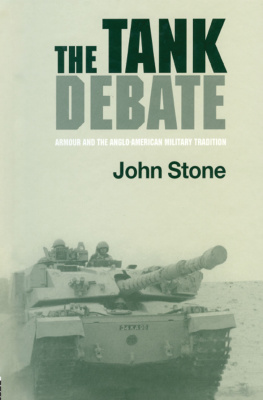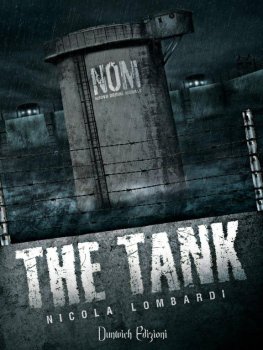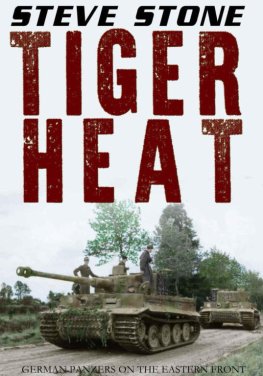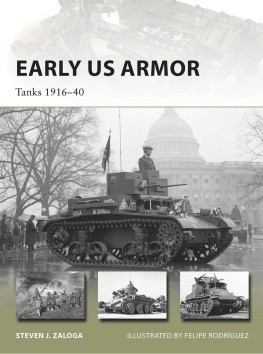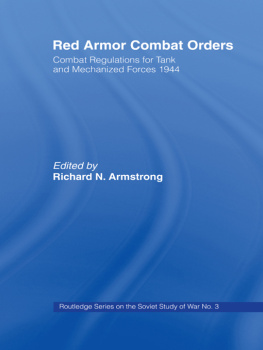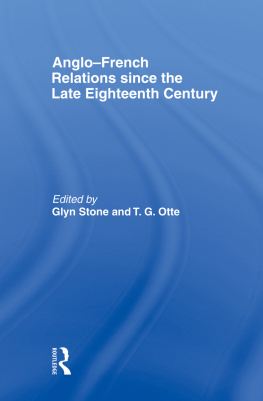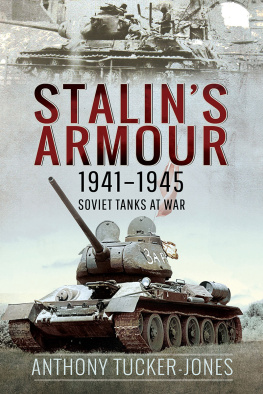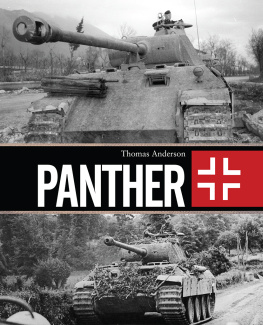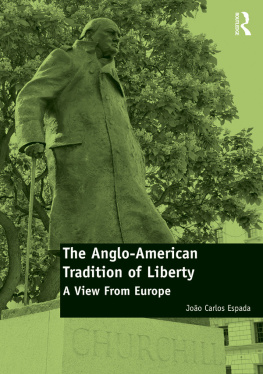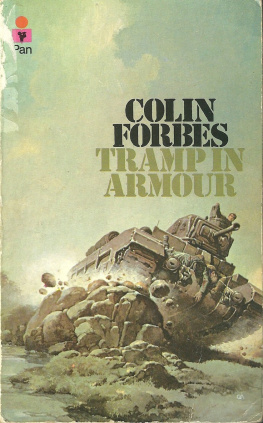The Tank Debate
The Tank Debate
ARMOUR AND THE ANGLO-AMERICAN MILITARY TRADITION
John Stone
Kings College London, UK
First published 2000 by Harwood Academic Publishers
This edition published 2013 by Routledge
2 Park Square, Milton Park, Abingdon, Oxon OX14 4RN
711 Third Avenue, New York, NY 10017
Routledge is an imprint of the Taylor & Francis Group, an informa business
Copyright 2000 OPA (Overseas Publishers Association) N.V.
All rights reserved.
No part of this book may be reproduced or utilized in any form or by any means, electronic or mechanical, including photocopying and recording, or by any information storage or retrieval system, without permission in writing from the publisher.
British Library Cataloguing in Publication Data
A catalogue record for this book is available from the British Library.
ISBN: 978-9-058-23045-4 (hbk)
CONTENTS
This book is the result of my long-standing interest in the nature of the relationship between military technology and doctrine, and the problems which arise when this relationship becomes strained or is permitted to break down. In this respect, the tank provides an interesting case study. Historically speaking, its utility as a weapon system has been bounded as much by its ability to accommodate changes in the doctrinal concepts which have governed its employment, as by technical developments in anti-tank systems. However, it is the dynamic relationship between gun, missile and armour which has attracted most academic interest in the tank since 1945. Threatening developments in anti-tank systems have, from time to time, prompted bouts of intense speculation over the future of heavy armour, although these have been transitory phenomena, dying as rapidly as they emerged without yielding lasting results. Beyond this intermittent literature there has been little of substance. The technical aspects of tank design have received sustained and sober treatment in Richard Ogorkiewiezs many books and articles, but a thorough understanding of the challenges facing the tank today demands a somewhat broader perspective than the engineering approach allows. Nevertheless, not since the late Richard Simpkins Race to the Swift (1985) has an attempt been made to integrate the technological and doctrinal aspects of armoured warfare. And this is in many respects surprising because the 1980s marked a period of pronounced change in Western operational doctrine, which has continued to evolve very rapidly in the aftermath of the Cold War. Thus even before we consider the major technological developments which have accompanied this process of doctrinal change, it now seems timely to re-examine the position at which the tank has arrived.
Indeed, one of my main goals in writing this book has been to examine what the present conjunction of technological and doctrinal factors means for the future of the tank. It is, however, a goal towards which I have proceeded in a somewhat roundabout manner. In working towards my conclusions on this subject, I quickly became aware of the fact that I might well be adding my name to the surprisingly long list of those whose views on the fortunes of the tank have proved to be greatly in error. One has only to look at the careful arguments set forth in books such as Victor Wallace Germains The Mechanization of War (1927), or Mary Kaldors The Baroque Arsenal (1981) to see that the tank has repeatedly confounded the voice of reason in this regard. To my original purpose, I therefore added the second one of explaining why (at least in the Englishspeaking world) the future of the tank has for so long been the subject of erroneous predictions.
One result of this process is that my book contains more historical material than a narrow assessment of the tanks future strictly requires. Nevertheless, I have made no attempt to provide a comprehensive history of armoured warfare, but have limited myself to covering those particular aspects of the story which most directly touch upon my own project. These aspects remain many and disparate, and I have therefore generally remained content to develop my understanding of them through secondary sources. Only when I considered that the existing literature did not fully address my particular requirements did I look elsewhere.
Because this book is in large part a work of critical synthesis, it is only right that I express my indebtedness to those many authors whose ideasalbeit presented here in partial or reorganised formsI have greatly relied upon. Earlier versions of some of my material appeared in the RUSI Journal (June 1996) and in the Proceedings of the Britannia Royal Naval College Conference on Doctrine and Military Effectiveness (January 1997), and I would like to thank those whose commented on these pieces and inspired me to further efforts. I am also obliged to a number of my friends and colleagues for their encouragement and advice, most notably Professor Colin Mclnnes and Dr Len Scott of the University of Wales, Aberystwyth; Dr Gary Sheffield of the Joint Services Command and Staff College, Bracknell; Dr Jan Willem Honig and Dr Joanna Spear of Kings College London; Professor Richard Macve of the London School of Economics and Political Science; Mr Robin Fletcher, formerly of the Royal Military College of Science, Shrivenham; and Mr Bob Leitch. Last but not least, I would like to express my particular gratitude for the support of my partner Claire Greene, to whom this book is dedicated.
From recent comments, I wonder sometimes if I am presiding over a fleet of dated dinosaurs or am like the Flag Officer Battleships of 1939, who must have believed that he controlled the most important and unchallenged element in the defence of the United Kingdom and of the Empire.
Thus spoke Major-General J.M. Brockbank, Director of the Royal Armoured Corpsand a decidedly beleaguered figure in March 1974.1 Just six months previously, the opening stages of the October War in the Middle East had witnessed the first large-scale use of operator-guided anti-tank missiles. Such weapons were not in themselves new, but the startling losses inflicted by the Egyptian infantry on unprepared Israeli armoured formations had understandably led to widespread concern over the future of the tank. Back in Britain, Brockbank created a plausible caseframed in technical and tactical termsfor the continuing utility of heavy armour. Had he chosen to adopt a more historical perspective on the subject, he might also have drawn comfort from the fact that this was not the first time that the tanks demise had been widely predicted. Indeed, since its introduction in 1916 it has endured what can only be described as a highly equivocal status in both Britain and the United States. At times the tank has occupied an importanteven dominantposition in Anglo-American military thought, while at other times it has suffered from more than its fair share of detractors.
This cycle of acceptance and rejection (underpinned by the tanks stubborn refusal to disappear) has not escaped attention. In 1960 Liddell Hart observed that
[t]ime after time during the past forty years the highest defence authorities have announced that the tank is dead or dying. Each time it has risen from the grave to which they have consigned it.
He continues by providing five specific examples of such death-sentences drawn from the interwar period and the Second World War.2 Some years later Richard Simpkin made essentially the same comment.
The tank has more lives than the proverbial catand needs them. Politicians, scientists and the media have been performing its obsequies every 5 years or so since the twenties.3

